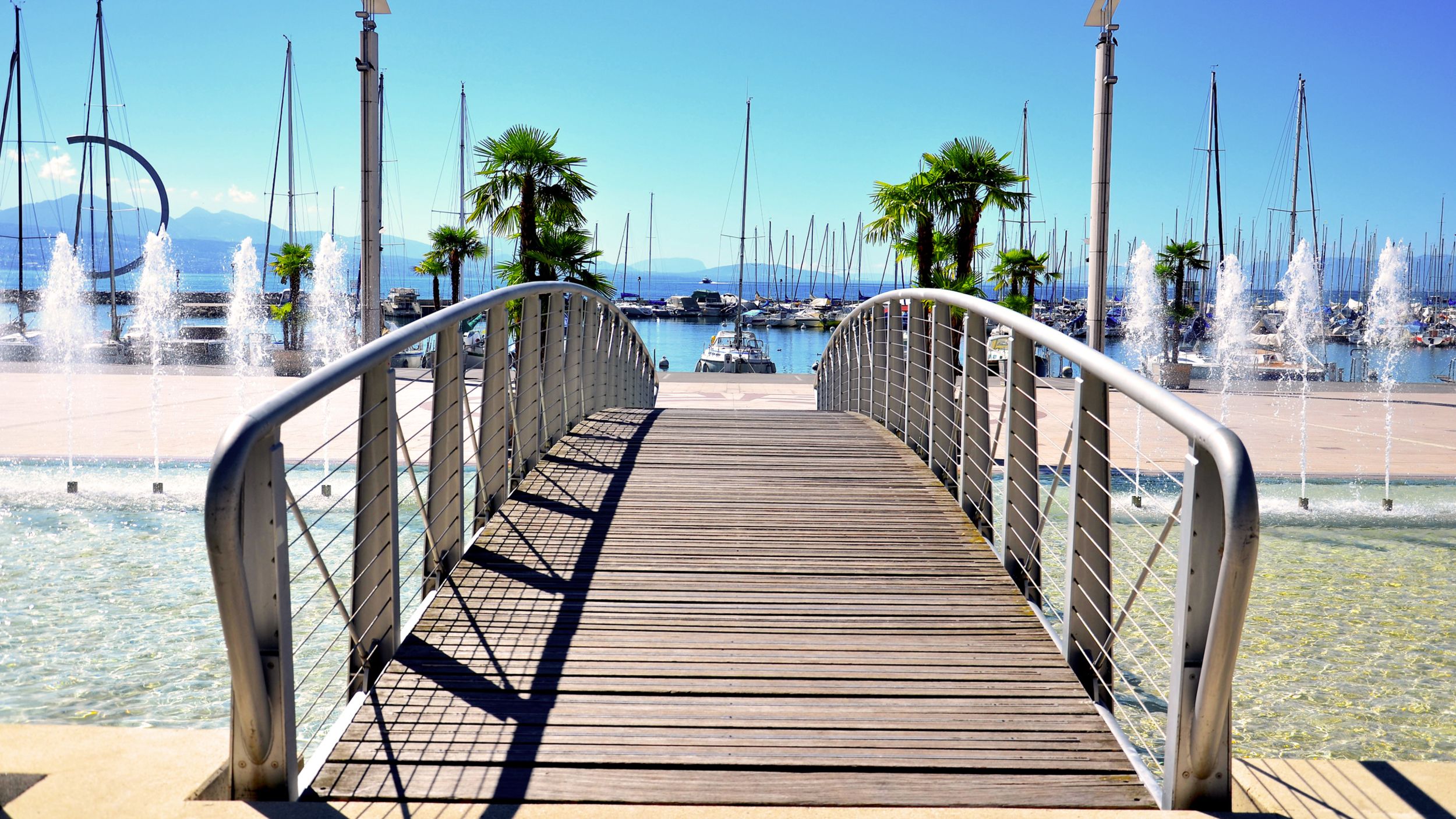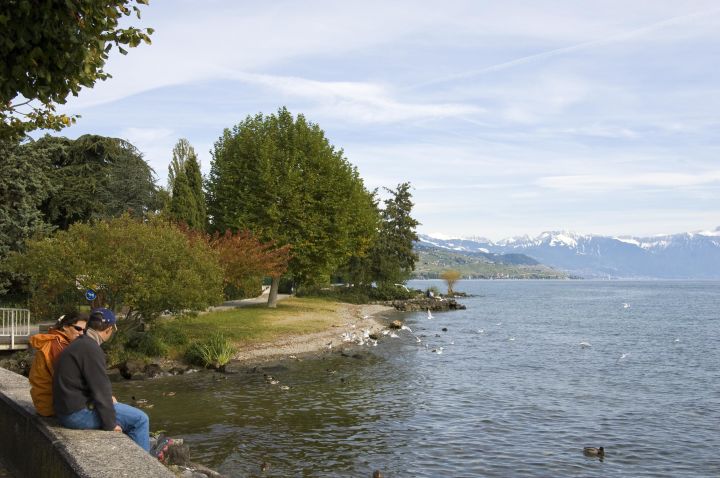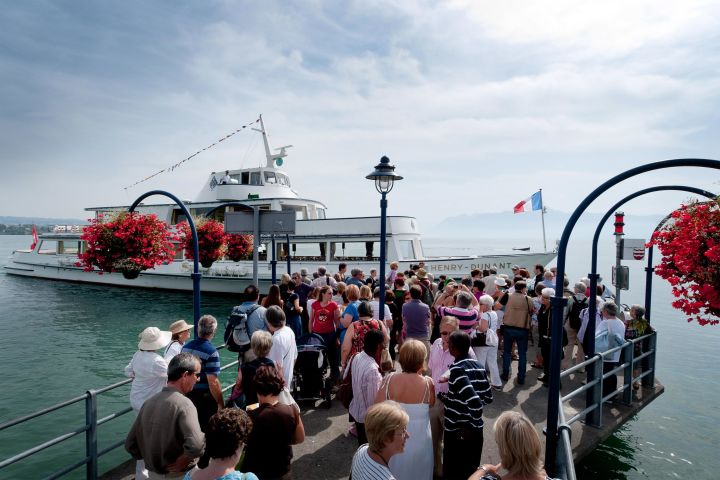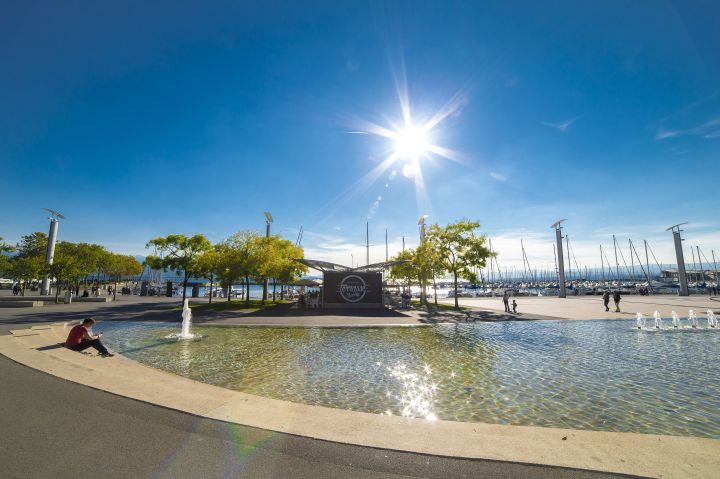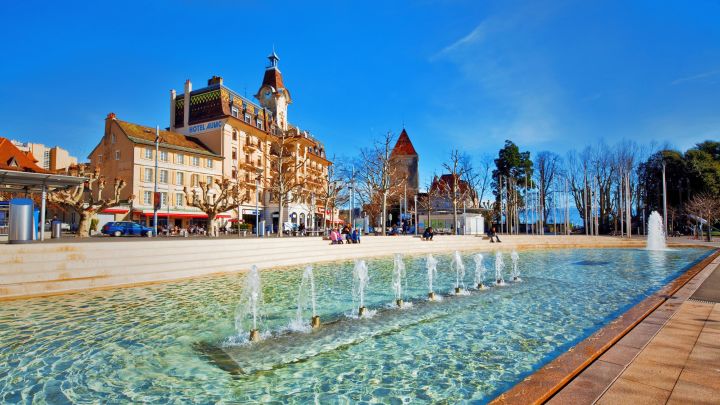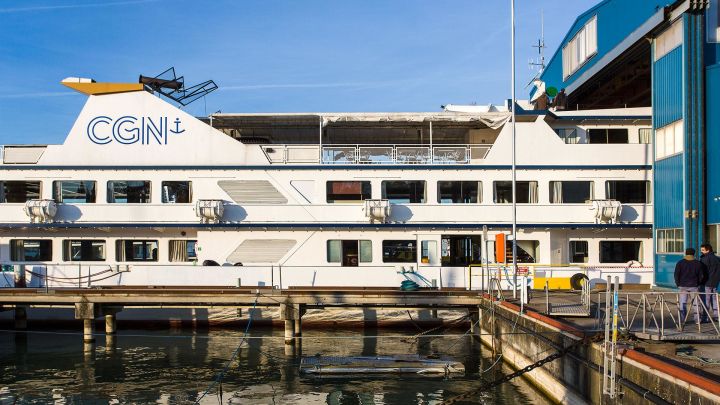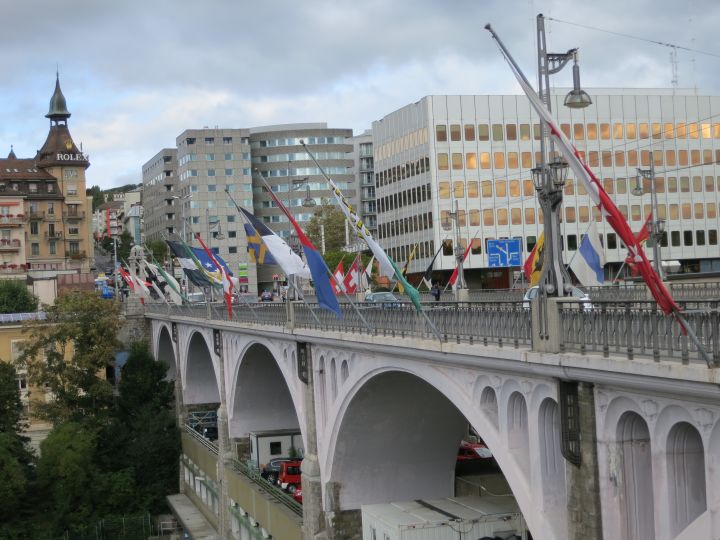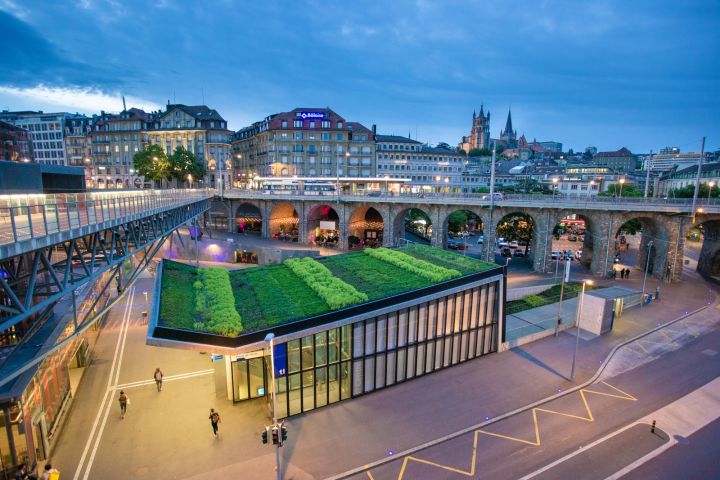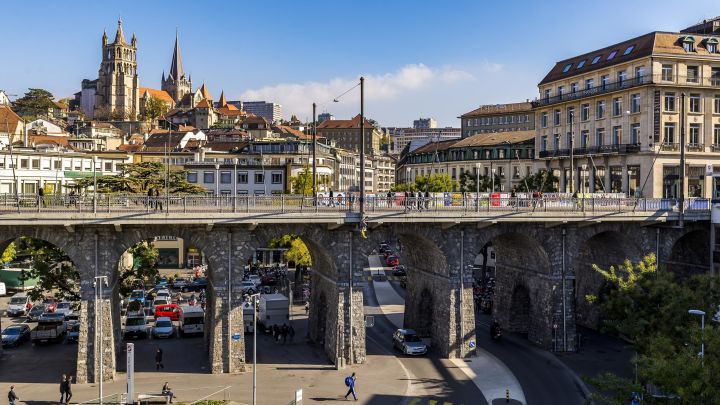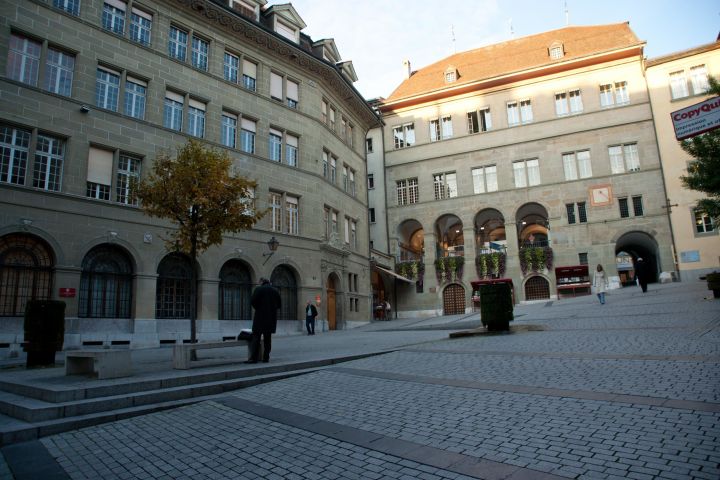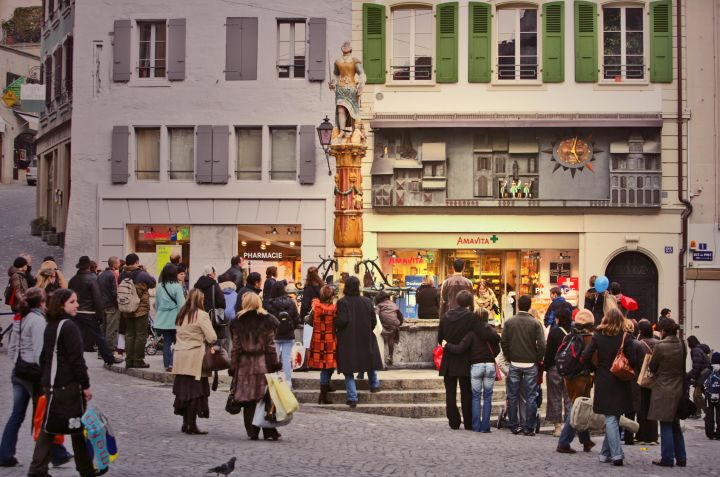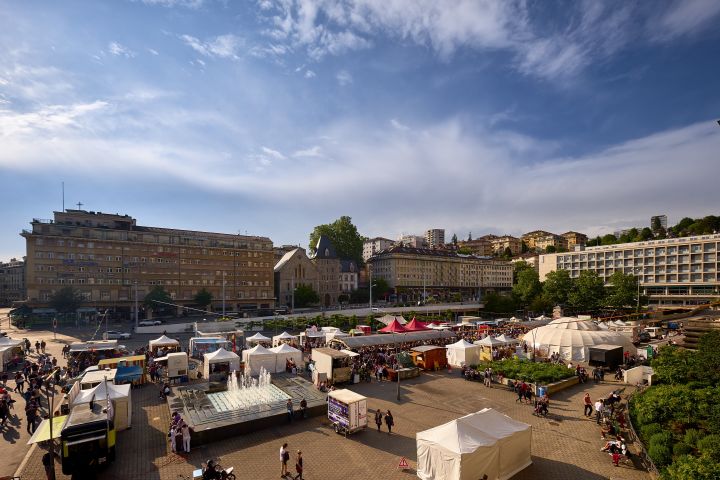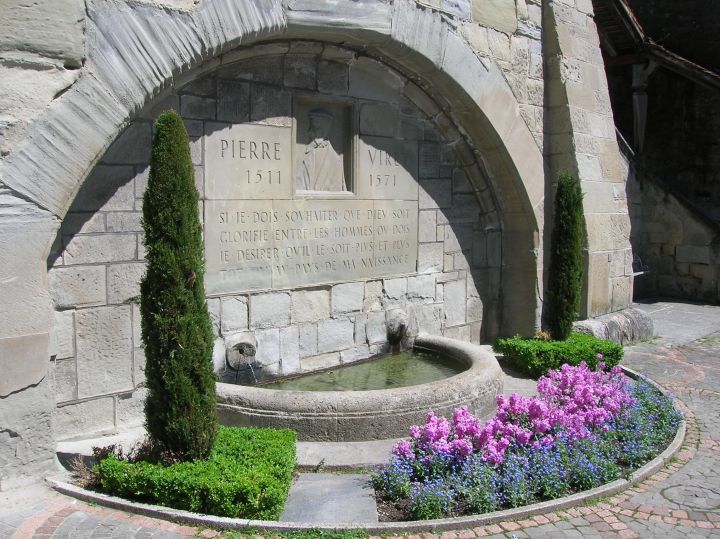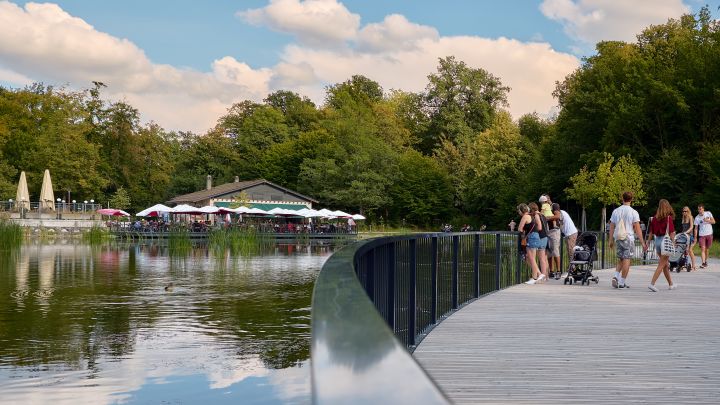From medieval times water was channelled to feed fountains, turn wheels, or evacuate the waste.
But water can be violent and dangerous, not only causing floods but also spreading disease. To tame it, riverbanks have to be strengthened. With the explosive population increase of the 19th century, the resources inherited from the Middle Ages became insufficient. Sources as far away as the Alps were tapped, and later - not without réticence - even lake water was pumped into the city and brought into the houses.
The demand for electrical energy increased, and to drive the turbines of new generating stations, and power cable railways, the Lake of Bret was created above Lausanne as a water reservoir. The hydroelectric schemes of the Alps date from the same period. After the generalization of electrical power, Lausanne's main rivers, the Louve and the Flon, served only as sewers, and they were covered over. But with the strict enfoncement of waste-water purification laws, most of the lakeside is again free of health hazards. The lake, however, has an incontestable place in Lausannes environment. Over a number of years quays, marinas, parks and pools have been constructed. The ancient fountains, too, lost their importance and many were demolished. Only nowadays is water being reintroduced into the city, mainly as an ornemental feature of the urban landscape.
But water can be violent and dangerous, not only causing floods but also spreading disease. To tame it, riverbanks have to be strengthened. With the explosive population increase of the 19th century, the resources inherited from the Middle Ages became insufficient. Sources as far away as the Alps were tapped, and later - not without réticence - even lake water was pumped into the city and brought into the houses.
The demand for electrical energy increased, and to drive the turbines of new generating stations, and power cable railways, the Lake of Bret was created above Lausanne as a water reservoir. The hydroelectric schemes of the Alps date from the same period. After the generalization of electrical power, Lausanne's main rivers, the Louve and the Flon, served only as sewers, and they were covered over. But with the strict enfoncement of waste-water purification laws, most of the lakeside is again free of health hazards. The lake, however, has an incontestable place in Lausannes environment. Over a number of years quays, marinas, parks and pools have been constructed. The ancient fountains, too, lost their importance and many were demolished. Only nowadays is water being reintroduced into the city, mainly as an ornemental feature of the urban landscape.
-
The Flon revitalized the Vuachère by partially discharging its water into it. The river is bordered by a nature reserve.
-
The harbour replaced a medieval merchant port that was in operation until the Belle Epoque. The park and quay date from 1901.
-
It features three sumptuous Lausanne gardens, situated one after the other along the quays: the Denantou, the Elysée, a little further back, and the Olympic Park, but also the rose garden of Place du Général Guisan, which boasts more than 130 different species of rose. Finally, from the CGN landing stages located at the bottom of the Dapples gardens you can embark for a unique cruise over Lake Geneva.
-
This large concourse, separated from the road by a basin marking the former lakeshore, was constructed in 1995. Where once industry and commerce reigned is now a place of leisure.
-
The lake boats are brought into this dock for maintenance. The gravel and sand, unloaded from the barges and used for building, are dredged from the zone where the Rhône enters the lake.
-
The Chauderon bridge, 240 m, is completing in 1905 the new area. Underneath is a fireengine storage.
-
Flon is the heart of the city of Lausanne, pulsing with life, day and night, in a modern and innovative setting. It’s the town’s architectural success: this district of former warehouses that begins at the Place de l’Europe was rehabilitated as a living area with a wide array of restaurants, bars, clubs, boutiques, cinemas, bowling and exhibition spaces. A must is to enjoy a drink on one of the rooftop terraces. In the winter, you can enjoy the ice-rink and in the summer the sandy beach.
-
the Grand-Pont is the nerve centre of Lausanne. Located literally in the heart of the city, it offers remarkable views, particularly of the Cathedral. The original lower arches of this bridge dating from 1844 were buried when the Flon was covered over. This pillar - type fountain is an example of those installed around 1900 to replace the older water troughs.
-
It connects the passage beneath the City Hall with a bridge over the river. The fountains mark the course of the Louve from the Place de la Riponne.
-
The striking Fontaine de la Justice animates the upper part of Place de la Palud. It is a typical example of the Renaissance-style fountains one can admire in other Swiss cities. The basin of this fountain dates from 1557, and the original statue of Justice, now replaced by a copy, was made in 1585. Like the City Hall, this feature of Lausanne marked the growing importance of the city.
-
This square was created by covering over one river, the Louve, in 1838. The course of the river is visible through a special window on the 3rd level of the underground car - park.
-
Fountains fed by natural springs satisfied Lausanne's water needs until the 19th century. This one, sheltered by an arch, was restored in 1797.
-
This magical spot, with its waterside animal park (cows, pigs, sheep, goats, peacocks and birds) and rustic restaurant surrounded by centuries-old oak forests, is only a bus ride away from Lausanne's shopping streets.




